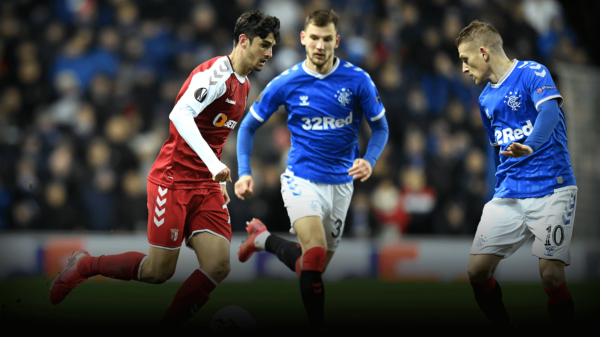Nachiketh Ramesh tactically analyses the Round of 16 game of the European Championship that finished Croatia 0-1 Portugal.
Croatia, everyone’s favourite to win or at least reach the finals of Euro 2016, crashed out of the tournament after losing to Portugal. Ricardo Quaresma netted in the rebound of Cristiano Ronaldo’s shot in the 117th minute, which was the first shot on target in the entire game – which only speaks how boring and dull the fixture was. Tactically there were a few developments that were quite intriguing. Here’s my tactical analysis of Croatia 0 – Portugal 1.

Starting line-ups of Croatia and Portugal made using Tactical Pad
Ante Cacic benched Marko Rog, Marko Pjaca, Nikola Kalinic, Sime Vrsaljko, and Tin Jedvaj and reverted to his preferred squad. Mario Mandzukic started as the striker in the 4-2-3-1 setup of Cacic. Ivan Perisic, Ivan Rakitic, and Marcelo Brozovic started behind the Juventus striker in the attacking midfield. Luka Modric recovered from the injury he sustained in the match against the Czech Republic and was present in the central midfield to partner Fiorentina’s Milan Badelj. Ivan Strinic, Domagoj Vida, Vedran Corluka, and Dario Srna formed the back four while Danijel Subasic continued as the goalkeeper.
Seeking his first win of the Euro 2016 campaign, Fernando Santos started with Cristiano Ronaldo and Nani up front in a 4-4-2. Andre Gomes, William Carvalho, Adrien Silva, and Joao Mario played in the midfield. Raphael Guerreiro, Jose Fonte, Pepe, and Cedric played in defensive line. Rui Patricio guarded the goal for Portugal.
Croatia’s 4-2-3-1 and its flaws that made the attack look toothless. Portugal defending with 4-4-2 diamond
Cacic’s 4-2-3-1 featured some great midfielders in Modric, Rakitic, Badelj, and Perisic. But the problem with Cacic’s system was the usage of the players in this setup. While Rakitic, playing as #10, assumed a position very close to striker Mandzukic, Modric and Badelj were deep in their own half, thanks to some very co-ordinated pressing by Portugal in the final third and middle third of the pitch. There was such a huge gap in the midfield that Croatia failed badly in establishing central presence during attacking build-ups. Most of the time the build-ups never progressed beyond the halfway mark of the pitch and the ball was circulated amongst Modric, Badelj, and the four defenders – Strinic, Vida, Corluka, and Srna.
Portugal, playing with a defence first attitude, had a 4-4-2 setup in which two wide players – Ronaldo and Nani played in central roles. Gomes and Carvalho were moving along the vertical axis thus changing the flat midfield to a diamond.
During Croatia’s build-ups, the centre backs were left facing Nani and Ronaldo. Modric was dropping deep alongside Vida and Corluka in order to provide stability at the back and find ways to get the attacks going. But whenever Modric was collecting the ball in the space between his central defenders, Portugal’s central midfielder Gomes was confronting him by moving from his position in the midfield diamond into the space between Ronaldo and Nani and taking a higher position in his team’s defensive structure. This was changing Portugal to a situational narrow front three that was denying Modric and Co. at the back any chances of passing to their teammates in the central roles.
Silva’s upward motion was leaving a hole in Portugal’s midfield. Badelj’s wide movement was dragging Nani wide. The result of these two actions was – space in the middle and Portugal’s forward line spread wide. Perisic and Brozovic were sliding into this open space and were trying to offer the players at the back a central passing option. There were a few instances in the match where Croatia almost managed to overpower Portugal in the midfield through this move. Modric was not able to exploit this weakness perfectly due to midfield pressing from Portugal and its tight man-marking.
Modric was not able to operate with the freedom he needed due to the awkward positioning of his centre backs. The Real Madrid man had to move from his defensive midfielder position to free himself from the tight hold of Ronaldo and Nani. The narrow positioning of Croatian centre backs did not help either. Since the centre backs were narrow, the midfield line of Portugal was also staying narrow – which was just enabling the Portuguese midfielders to cut out any passes from Vida or Corluka through the central regions.
Portugal manager Santos, as you have seen in the graphics above, used his forwards to defend the half-spaces and block the passes to opponents who were positioning around that region. The advantage was, as soon as the ball was won Portugal had at least one player occupying the half-spaces. From the halfspaces, it was easy for Ronaldo and Nani to move to both the wings and the centre depending on the movement of the ball and their teammates during the attacking phase.
In the defensive phase, like Aaron Ramsey and Jonathon Williams defended from the half-spaces, Ronaldo and Nani were able to block outward passes from the centre (Modric) to half-spaces (Brozovic or Perisic or Badelj) and wings (Srna or Strinic) and inward diagonal balls from the centre backs to players in the central zones in the middle third. Here’s a picture of Ronaldo defending in the half-spaces.
Not just blocking a few passes but Portugal created a few pressing traps in the half-spaces and was quite successful in driving Croatia out of the danger zones to wide areas. One of the centre-forwards was cover shadowing the near side wingback of Croatia while Silva was cover shadowing Modric. In the far side, Carvalho was pocketing Rakitic. This left just Badelj or whoever was receiving a pass in the half-space to conduct play forward through the centre.
I am not trying to imply that Portugal was perfect while defending. There were a few issues which should be of concern to them. One was their man-marking in the midfield. Carvalho was sticking close to Raktic, Silva was tracking Modric’s movements, the wingers and wingbacks were marking their opponents in the wide areas during Croatia’s build-ups.
Man-marking allows a team to be manipulated by the opponents who are being marked. Runs could be made purposefully in order to make space for a teammate or to facilitate an attacking move by gaining numerical advantage. Like all the teams that man-mark, Portugal’s shape was getting distorted. Portugal was losing its compactness which is usually a trait of a team that defends with a 4-4-2. Lack of compactness was leaving gaps in the midfield.
Croatia was just unable to build attacks through the middle. Even when they tried, the attacking moves were thwarted by Portugal’s midfielders. Croatia’s attacking shape was poor. Since Portugal was denying them the chance of ball penetration, Croatia was forced to try to create scoring chances by relying on crosses.
Here’s a graphical image which shows a scene from the match. Look at the situational shapes of both the teams. Portugal has no compactness due to man-marking. There’s space open for Croatia to attack by providing penetrative passes to the midfielders positioned at different heights. But there are no midfielders in the central region. The shape is not a staggered one. Bad defensive shape from Portugal. Bad attacking shape from Croatia. Which shape is worse?
Croatia’s 4-2-2-2ish shape while in the defensive phase
As Rakitic moved forward to join Mandzukic, and the duo of Brozovic and Perisic narrowed down their positioning, Croatia was attaining a 4-2-2-2 shape without the ball while defending in the higher middle third and final third. A 4-2-2-2 shape with a hexagon in the middle is a good opportunity for a team to press aggressively and win the ball back quickly. Roger Schmidt’s Leverkusen team plays with a similar strategy and his team is quite good at counterpressing. Croatia however, didn’t try to press with such an intensity and Portugal players were regularly slipping with the ball from the opposition’s pressing traps.
As Portugal was moving deeper into Croatia’s half, Cacic’s men were changing to a basic 4-4-2 with very less space between the lines. Croatia did well to hold Ronaldo from doing any significant damage until the 116th minute.
Second half and extra time
While Cacic was very determined not to make any substitutions for some reason, Santos brought on Renato Sanches earlier in the second half. The new Bayern Munich signing was very active in the middle and added energy to Portugal’s midfield.
With Sanches in the middle, Portugal was able to change between a few formations during both the phases of the game and be flexible in order to keep Croatia at bay. For every new approach that Croatia adopted in order to generate a scoring chance, Portugal had an answer in the form of a new shape.
Portugal was changing between 4-4-2, 4-1-4-1 and 4-2-3-1. With Sanches’ introduction, Portugal pressed more effectively in the middle. Silva and Sanches were pressing Modric and Badelj while Nani and Mario were pressing the wide players. Except for a few players like the wingbacks and Carvalho, who were still man-oriented in marking, the players in the attacking line started to adopt a zonal approach.
In the attacking phase, Portugal was a bit more active than it was in the first 45 minutes. Through the use of clever combination plays, Portugal was successful in counterattacking with some intensity. Tired and on the verge on losing their ability to concentrate for longer periods, Croatia was caught a few times failing to properly execute pressing in the middle third.
Here’s a graphical image showing how Portugal beat Croatia’s pressing. Portugal used such combination of passes to open space in the middle by exploiting Croatia’s not-so-pressing-friendly shapes.
Conclusion
With players like Ronaldo, Sanches, Nani and Quaresma to propel the attack, Portugal was intent on sitting back and counter-attacking in the last 15 minutes of extra time. Cacic should have seen this coming. Right when fatigue started to take its toll on players, Portugal found some sort of spirit.
Tactically, it was a decent defensive show from Portugal. For almost 70% of the match, the fight was between Croatia’s attack and crafty midfield against Portugal’s “I will not lose the match” approach. Cacic failed to use his players in a correct manner. With an alternative formation, say a 4-3-3, this team could have found the depth it so badly required.
Written by Nachiketh Ramesh
- Hipster Guide 2016-17: Fiorentina’s tactics, key players and emerging talents - August 17, 2016
- Euro 2016 Tactical Analysis: Germany 1–1 Italy (6-5 Pens) | Germany and Italy play almost similar systems - July 5, 2016
- Euro 2016 Tactical Analysis: England 1 – 2 Iceland | Tactically disciplined Iceland kicks England out of Europe. - June 29, 2016

































































